Rain chains are a beautiful way to harness the power of water. The concept is simple: Surface tension and gravity guide the water down a chain. DIY rain chains are great recycled crafts to make on a budget. I decided to make a chain out of salvaged spoons. If you’re looking for spoons at the thrift store, be sure to select thinner ones so they’ll be easy to bend and drill, and choose a wire that is rustproof and easy to manipulate.
Materials:
- DIY Rain Chain Materials
- Spoons
- Wire
- Drill
- Sharp drill bit
- Needle-nose pliers
- Bench vise or clamp and pliers
Step-By-Step Instructions:
Step 1
Decide how long you want the rain chain to be. Using a bench vise, bend enough spoons to complete the project. If you don’t have a vise, use a hand clamp to secure the flat part of the spoon against a table with the rest of it hanging over. Use pliers to bend the spoon down.
Step 2
Remove the bowls from a dozen or so spoons. Use the same method as in Step 1, only bend each spoon back and forth until the bowl snaps off.
Step 3
Drill holes in the end of each spoon handle, including the handles without bowls.
Step 4
Put two spoons together back to back so the bowls are facing outward. Fit a bowl-less handle between the handles of the two spoons, leaving several inches extended past the spoons. The protruding end of the handle should have the hole in it. Wrap wire around all three handles just above the bowls. Then wire together the handles of the spoons at the other end as tightly as you can. Be sure to leave some extra wire for attaching the next segment. Repeat this step until you’ve used all your spoons.
Step 5
Once all the segments are assembled, attach them to each other by twisting together the extra wire you left at both ends. Make sure to leave enough wire on one end of your chain for hanging.
Step 6
Hang the rain chain from a tree limb above a rain garden, or use it in place of a downspout above a splash block to direct water away from the house. You can also use a decorative glazed pot or rain barrel below the chain to collect water for use in the garden.
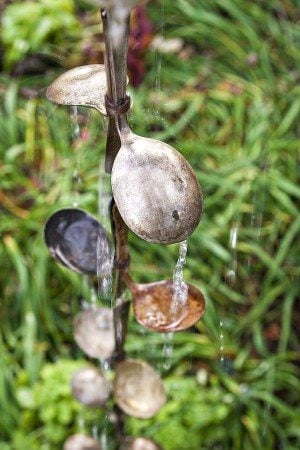
This porch swing bird feeder style has become very popular recently, with both humans and birds! This unique take on a platform feeder brings in cardinals, titmice, woodpeckers, and more. Can’t find one for sale near you? Build your own with our DIY bird feeder plans.
Start with this shopping list, then click the link below for the complete instructions in a printable format. We chose to use poplar, a wood commonly used for crafts, since this wood comes in the 1/4-inch and 1/2-inch thicknesses used in this project. That way, there’s no need to resaw the boards for thickness. You’ll find it with the craft woods at home improvement stores.
Materials:
- One 1/4-inch x 6-inch x 36-inch poplar board
- One 1/2-inch x 6-inch x 36-inch poplar board
- 4 feet of light-duty chain
- 6-inch x 12-inch window screen
- Four screw eyes
- Two S-hooks
- 1/4-inch staples
- 5/8-inch, 7/8-inch and 1-1/4-inch brads
- Table saw
- Power drill
- Pull saw or backsaw
- Small square
- 7-ounce hammer
- Small nail set
- Stapler
- Pliers
Step-By-Step Instructions:
Step 1
Ready to build? Click here to open the DIY bird feeder instructions in PDF format, perfect for printing and taking with you to the workshop!
Recycle mismatched plates, bowls or candleholders into beautiful glass garden flowers. These show-stopper garden decorations are sure to be one-of-a-kind and won’t require any watering!
Materials:
- 3 glass plates, bowls or dishes in three different sizes
- glass candleholder, salt or pepper shaker, or small vase
- 1 small vase that is flat on one side
- Alcohol wipes
- Paint specifically for glass
- Paintbrushes or sponges
- Markers or pens for glass
- Clear, waterproof silicone
- Copper, metal or PVC pipe
Step-By-Step Instructions:
Step 1
Clean the glass pieces thoroughly with alcohol wipes and let them dry. Use either a sponge or paintbrush to paint the glass pieces, covering completely. If you want, add details like stripes, circles or petals. A couple of layers might be necessary to get full coverage. Use the markers or pens to add small details.
Step 2
Bake the glass pieces according to baking directions on the paint bottles. (In general, bake at 325 degrees on the top rack for about 20 minutes.) But be careful: Very thin plates can break in the oven. And be sure to open your windows or turn on the exhaust fan, because the paints can have a strong odor when baking. Turn off the oven, and let the glass pieces cool completely before removing them.
Step 3
Lay the largest plate flat on a covered surface. Apply silicone to the bottom of the next largest piece and press it down onto your base plate. Continue applying silicone to the bottom of each of the smaller pieces until the flower is assembled. Let the whole piece dry overnight.
Step 4
The next day, apply silicone to the smallest vase and, holding the vase upside down, press it to the back of the flower. This will serve as the mount that fits over the pipe for display purposes. Let it dry overnight.
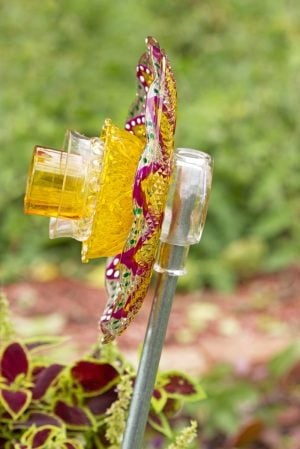
Step 5
Pound the pipe into the ground, slip the flower over the pipe and enjoy. Now make a few more—they look great in groups of two or three.
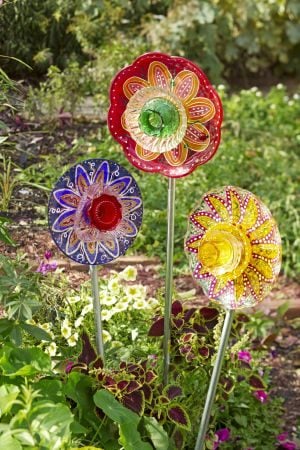
Finding plant markers that can withstand our punishing Ontario winters and survive the harsh summer sun has been a challenge. And I wanted them to be attractive, easy to make and reusable year after year. Is that too much for a gardener to ask? I hope not, because they also had to be inexpensive…I needed lots of them! Luckily, I stumbled onto these easy DIY plant markers using copper sheet metal and wire to make my own plant markers. In just a few evenings, I made a pile of these copper plant markers. The best part… they’re sure to last. All except for the ones I accidentally ran over last summer with the lawn mower!
Materials:
- 36-gauge copper sheets
- 12-gauge wire
- Paint marker, extra fine, black
- Colored paint marker (optional)
- Transparent tape
- Clear enamel spray
- Scissors
- Side cutting pliers
- Small rubber or plastic roller (optional)
- Soldering gun or mini torch (larger torches are not recommended for this small project)
- Solder and flux
- Incombustible soldering surface
- Fine sandpaper, 220-grit
- Fine steel wool
Step-By-Step Instructions:
Step 1
Make your own paper shapes and cut about 1/8 inch from the edges. Tape them to the copper sheet metal. Cut the copper along the outline of each shape using a scissors. Sand sharp edges. Punch any holes desired with a paper punch. Flatten each shape with a roller, rolling pin or even a glass bottle on a smooth surface.
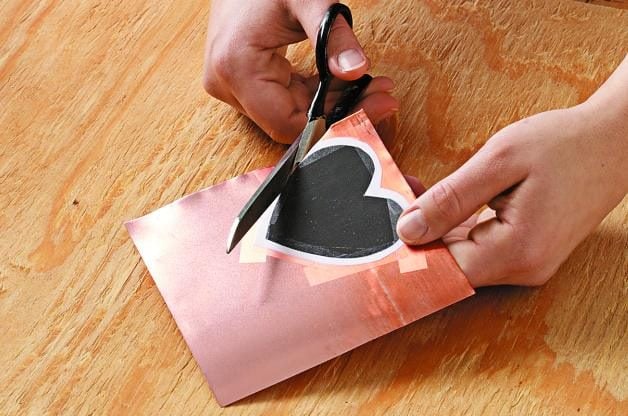
Step 2
Place the copper shapes on a soft pad (such as a dish towel) and write plant names with a blunt pencil. Use a black paint marker to write within the indents, making the names more prominent. Decorate the edges if desired.
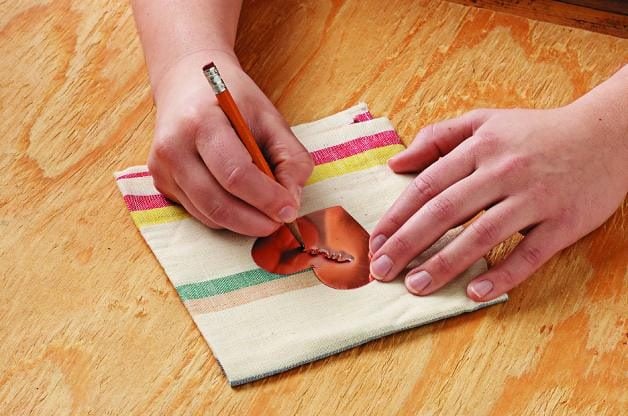
Step 3
Clean shapes and wires with steel wool or sandpaper before soldering.
Cut wire with side cutting pliers to desired length (mine are about 10 inches). Solder wire to the back of each marker. Apply flux first and heat until it bubbles. Then touch the solder to the side of the wire until it flows. Solder on both sides of the wire, holding the wire in place until it cools.
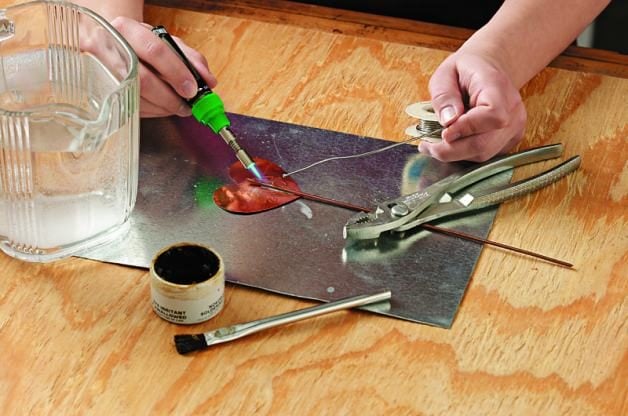
Step 4
Spray the markers with clear enamel to prevent tarnishing. Now you’re ready to add them to your garden!
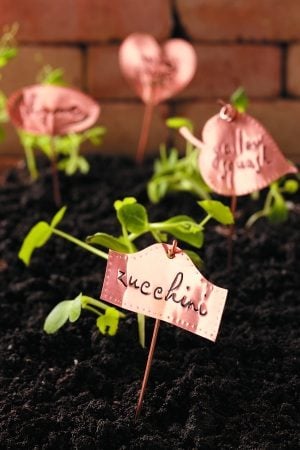
If your yard needs an extreme makeover, improve the soil first. This sounds tough, but compost makes it easy. It’s the ultimate soil amendment – experienced gardeners call it “black gold.” And you can make it for free! All it takes is a blend of yard and kitchen waste.
Unlike sprawling compost piles, this bin keeps the contents neatly contained. Air can circulate freely, which is essential for breaking down the ingredients, and the bin opens on any side, so it’s super-easy to turn the pile. Once you learn how to compost, you’ll be sorry you didn’t start doing it sooner!
Materials:
- Eight pressure-treated 6-foot 2×4’s
- Thirty-two 5/16-inch x 2-inch carriage bolts, nuts and washers.
- Four 3-inch door hinges
- Four large hook-and-eye assemblies
- 12-foot x 36-inch hardware cloth, 1/2-inch squares
- Poultry wire staples
- Waterproof construction adhesive
- Table or circular saw
- Rafter square
- Power drill
- Chisel
- Rasp
- Tin snips
- Pliers
- Heavy-duty work gloves
Step-By-Step Instructions:
Step 1
Cut each 2×4 in half to make 16 3-foot pieces. Cut a 3-1/2-inch x 3/4-inch deep notch (a rabbet) in both ends of each piece. You can do this on a table saw or with a circular saw. Make several close cuts (about 1/8 inch apart) across the grain in the notched section. Use a hammer and chisel to break out the wood between these cuts. Smooth with a rasp.
Step 2
Fit notched ends together to make four 3-foot-square frames. Drill holes for two carriage bolts in the opposite corners of each notch. Use construction adhesive in each joint before assembling. The nuts should face the outside so the bolts won’t catch on your clothes when you’re turning the pile.
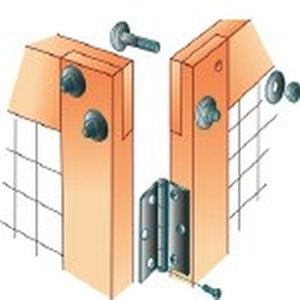
Step 3
Use tin snips to cut the hardware cloth into four 3-foot-square sections. Tack each corner of the hardware cloth to the frame with poultry wire staples. Then staple around the frame every 2 inches.
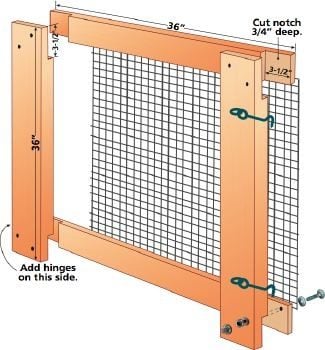
Step 4
Connect two frames with two door hinges, then put two hook-and-eye gate latches on the other ends. Repeat this step for the remaining two frames. Stand the frames to form a square and latch the sections together.
Step 5
Put your bin in a level, well-drained area in full sun, with good air-circulation. Add equal parts brown and green wastes.
To aerate the pile, mix or toss frequently with a garden fork, or poke air holes into it with a broom handle. Keep the pile moist, like a sponge, but not soaking wet.
The process is finished when the bottom of the pile has dark, rich soil that crumbles in your hand.
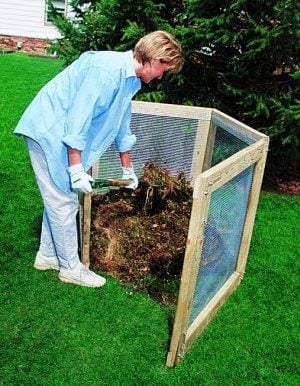
If you’ve ever been torn between the desire to tidy up the dead seed heads of summer blooms and leaving a good food source for birds, then this project is perfect. It will give you and the birds the best of both worlds! Just collect your spent blooms and turn them into an attractive DIY bird feeder wreath.
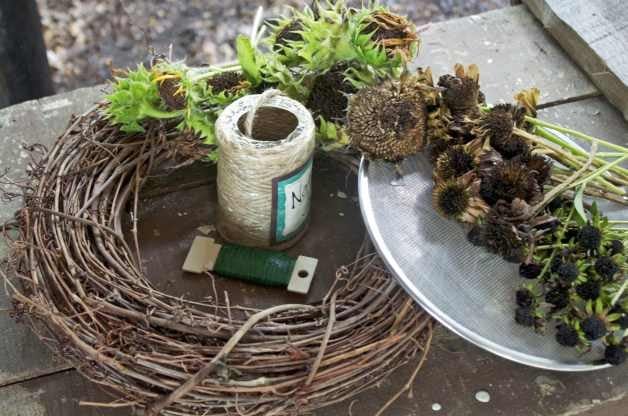
Materials:
- Splatter screen or window screen
- Rope or twine
- Grapevine wreath
- Assorted seed heads
How to Make a DIY Bird Feeder Wreath:
Step 1
You can use just about any kind of screen for this project as long as it provides good drainage and the holes aren’t too big. (I used a spatter screen, but a window screen would work.) Cut to fit in the middle of your wreath and remove everything else that could potentially get in the way.
Step 2
Cut the twine or rope into three lengths, about 48 in. each. Tie at evenly spaced intervals around the wreath.
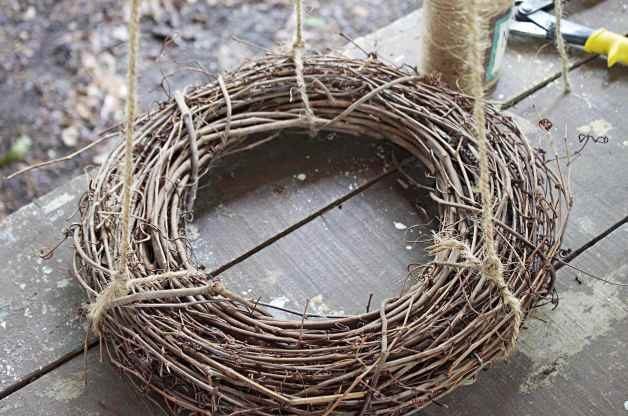
Step 3
Flip the wreath over on your work surface and place the screen on the back of the wreath. Thread a length of wire through the screen near the edge and then around a sturdy vine in the wreath, twisting the ends together to secure. Do this at three or four intervals or until screen is tight.
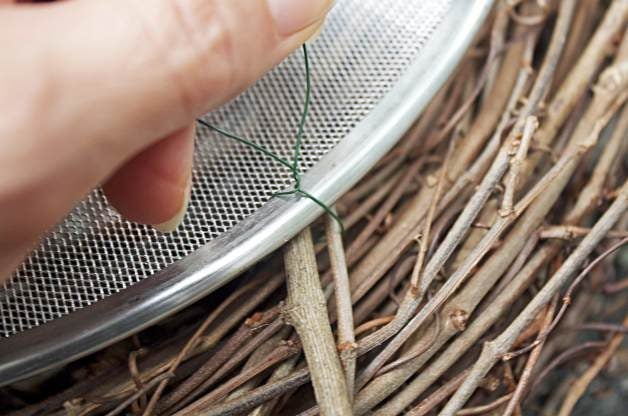
Step 4
Flip the wreath back onto its right side, and begin tucking the seed heads in among the vines. Continue until the wreath is covered. Fill the middle with your favorite birdseed and hang! Next, learn how to make a DIY bird seed wreath.
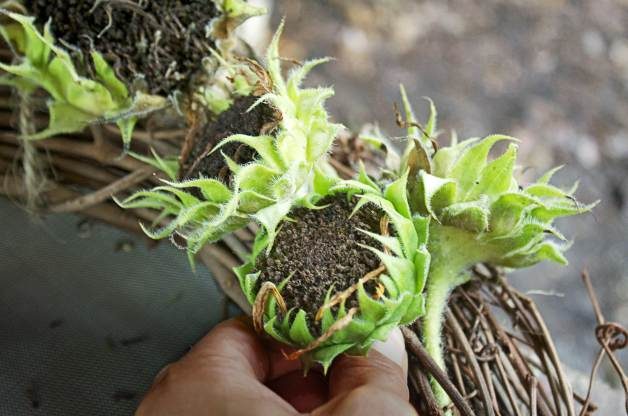
Need some help attracting birds to your backyard? Try adding a new food into the mix. Peanuts are a draw for woodpeckers, blue jays and nuthatches. This simple DIY bird feeder is a perfect way to try this food source in your yard. As a bonus, squirrels may be so busy visiting this feeder that they’ll leave the others alone!
Materials:
- One 2-foot 1-inch x 6-inch board
- Approximately 12 inches x 18 inches of hardware cloth with 1/4-inch squares
- 36-inch-long light-duty chain
- One screw eye
- Netting staples
- Waterproof carpenter’s glue (or 1-5/8-inch deck screws)
- Band, saber or scroll saw
- Wire cutter
- Needle-nose pliers
- Soldering iron (optional)
Step-By-Step Instructions:
Step 1
Cut out four disks-two should measure about 4-3/4 inches across, and two should measure about 3 inches across-with a band, saber or scroll saw. Make the circles with a compass, or simply trace the rims of quart and 1/2-pint paint cans (or other cans similar to the dimensions above). Cut the smaller disks carefully—they should be as close to identical as possible.
Center and glue (or predrill and fasten with three 1-5/8-inch deck screws) each small disk to a larger disk. Clamp these pieces together until the glue completely dries. This will form the top and base of the feeder.
Step 2
Fasten one end of the chain to a screw eye. Open the eye with two small pliers. (Twist in opposite directions until the eye opens just enough for the chain to be inserted.) Close the eye with a pliers.
Drill a pilot hole in the center of one of the small disks and turn in the screw eye. This will become the feeder’s base.
Step 3
Wrap hardware cloth around the completed base. (If using a 1/2-pint paint can to determine the size of the smaller disks, wrap the hardware cloth around the base and the can, which should be positioned about 10 inches higher than the base. Wrap heavy-duty rubber bands around the base and can to form a cylinder.)
Cut the hardware cloth about 1/4 inch beyond the last complete square where it comes together. This will leave small wire tabs on one end. Now you can remove the rubber bands and paint can.
Step 4
Bend hardware cloth into a cylinder and attach to the feeder’s base with netting staples (with the chain inside). Join the two ends of hardware cloth to form a cylinder. Secure by wrapping the tabs around the other end using needle-nose pliers. Make sure the cylinder isn’t too tight at the feeder’s top, otherwise it will be difficult to lift up and close when filling with peanuts.
Tip: We recommend spot soldering the wire at the seam about every 2 inches for a better hold. If there is excess wire at the tabs, trim with a wire cutter.
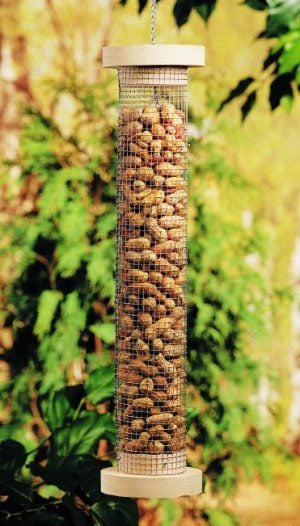
Step 5
The chain can be looped for hanging or attached to an “S” hook. Slide the top up along the chain and then fill the cylinder with peanuts, unsalted and in the shell. You’ll be amazed by how fast the peanuts start attracting birds!
Attracting bluebirds is easy when you offer mealworms. There’s no need to buy an expensive feeder, though. This DIY bird feeder made from tuna cans costs less than $1 to make. You just need a few supplies and tools. Then hang it in a tree, and wait for those blue beauties to arrive.
Materials:
- 2 recycled cans (tuna or cat food)
- 16- and 18-gauge wire
- Beads
- Paint
- Needle-nose pliers
- Drill
Step-By-Step Instructions:
Step 1
Clean out your cans and let dry. Drill three holes in the shape of a triangle on both the bottom and rim of each can. Be sure the holes on the top and bottom line up so your feeder isn’t crooked.
Step 2
Paint or decorate your cans any way you like. I used acrylic paint in many layers, allowing the paint to dry. Then I accented with a gold color metallic pen. You can also use spray paint or permanent markers to create your own unique design.
When completely dry, spray the painted cans with a little bit of matte finishing spray.
Step 3
Cut the wire that will hold the two cans together. Cut six pieces, 9 inches long, of 18-gauge wire. Insert the wire into the rim of each can and twist a few times, leaving approximately 3 inches for decorative curling and 6 inches for hanging. Leave unattached for now.
Step 4
Create the hanger portion of the feeder by cuting about 12 inches of 16-gauge wire. Make a small loop at one end, and then fold the wire over to make a hook. At the other end, create an eyehook. Depending on where you will be hanging your mealworm feeder, adjust the length as needed.
Step 5
For the decorative element under the hanger, cut a 12-inch piece of 16-gauge wire to loop and curl. Fold the wire in half, and make a loop at both ends in a figure-eight formation. Cut the remaining ends to the same length and curl. Attach this piece to the hanger by creating an eyehook at each end of a bead and attach the two pieces together.
Step 6
Attach the cans together. Start with the bottom can. Place a bead on each stem, insert the excess wires into the top can and make a small loop at the end of each one. Do the same with the top can, attaching the excess wires to the hanger.
Step 7
You can add swirls, beads and any other decorative elements to the bottom of the second can. Using 4-inch pieces of wire, insert them through the bottom of the can and decorate as desired.
Finally, it’s time to hang the feeder and add the mealworms. In no time at all, you’ll be attracting bluebirds from all over the neighborhood!
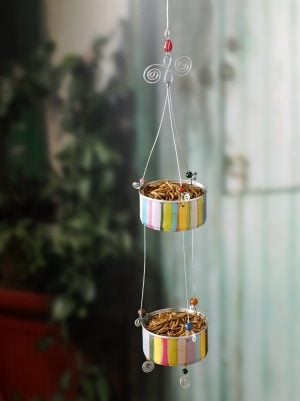
I got this idea for a tiered birdbath while watching how the birds and other critters use the baths on my deck. I have a traditional concrete bath, the bowl of another small birdbath minus a pedestal, and a plate just deep enough to hold some water. They all get used. House finches, chipmunks, bugs—everyone has room. And because of the daily show they put on, I decided to make my very own DIY bird bath water park for all creatures large and small. You can too!
You can use any thick, sturdy branches you can find. First, though, pick your bowls, because the biggest one will nestle at the top of the tepee formed by the sticks. You’ll be mounting the holders for the smaller bowls to the limbs or sticks themselves. The bowl at the bottom should meet the needs of any four-footed visitors, like turtles or chipmunks. And none of the bowls should be deeper than 2 inches, because you don’t want to intimidate the critters you’re trying to attract.
Materials:
- Three tree branches or sticks, with diameters of 2 to 3 in.
- 3 or 4 bowls of different sizes and shapes
- Drywall or wood screws, in lengths from 1 to 3 in.
- Screwdriver or drill with drill bit slightly smaller than screws
- Iron plant holders (find these at your hardware store)
- Rocks, optional
Step-By-Step Instructions:
Step 1
Once you’ve chosen your limbs and have played with the positioning a bit, use a drill or screwdriver and drywall screws to attach the branches where they intersect.
Step 2
Using screws, attach plant holders to the branches where you want your bowls.
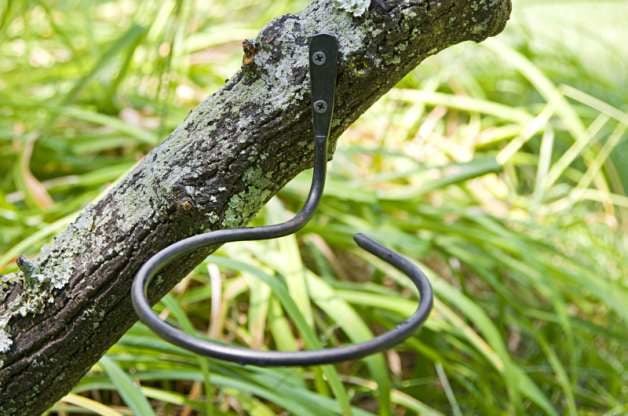
Step 3
Position the bowls, fill with water and find a comfy chair nearby. Before long, nature will come calling!
Tips: If you want to make friends with garden bugs, add a few rocks to one or more bowls for perching.